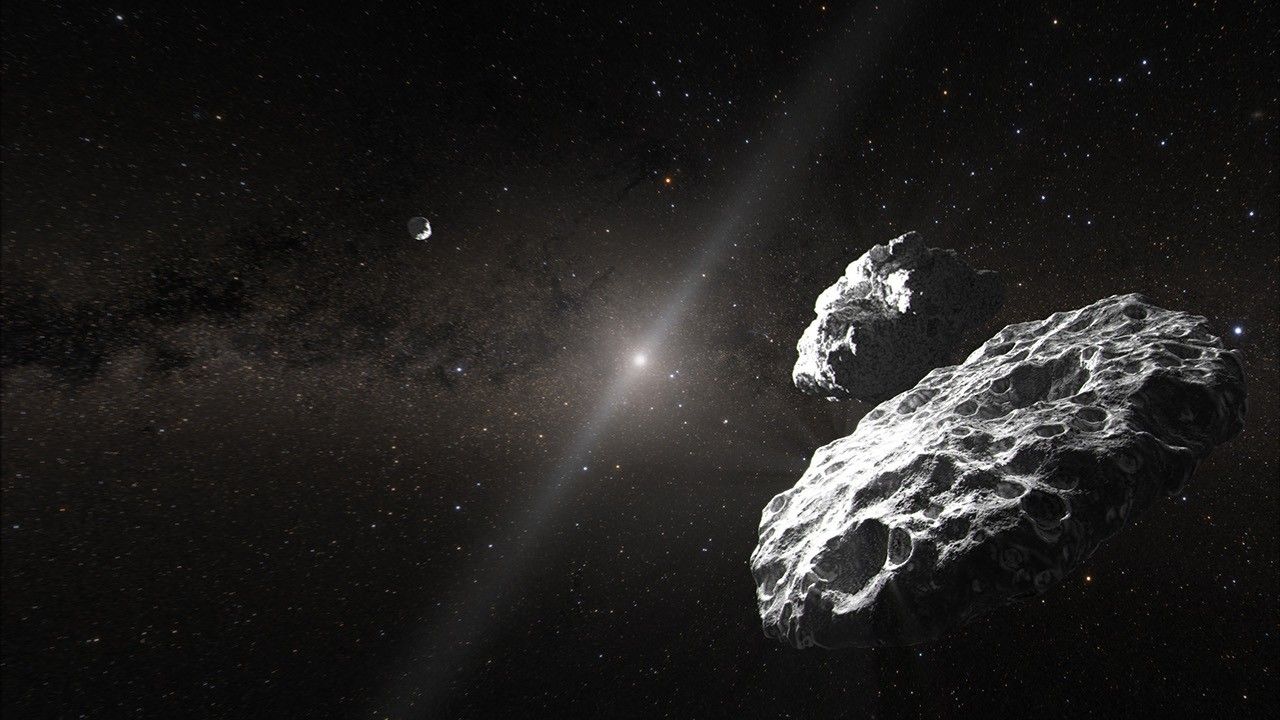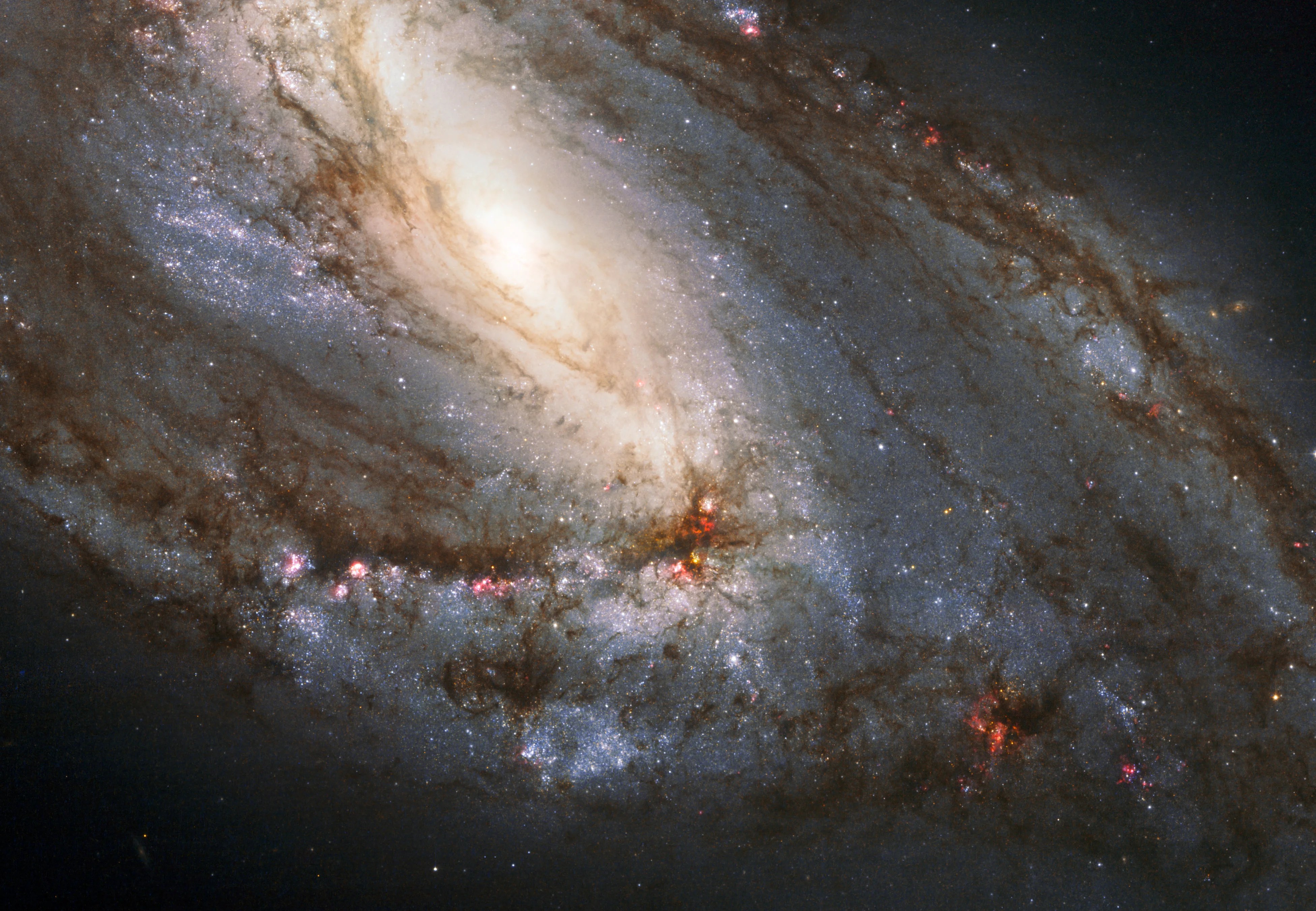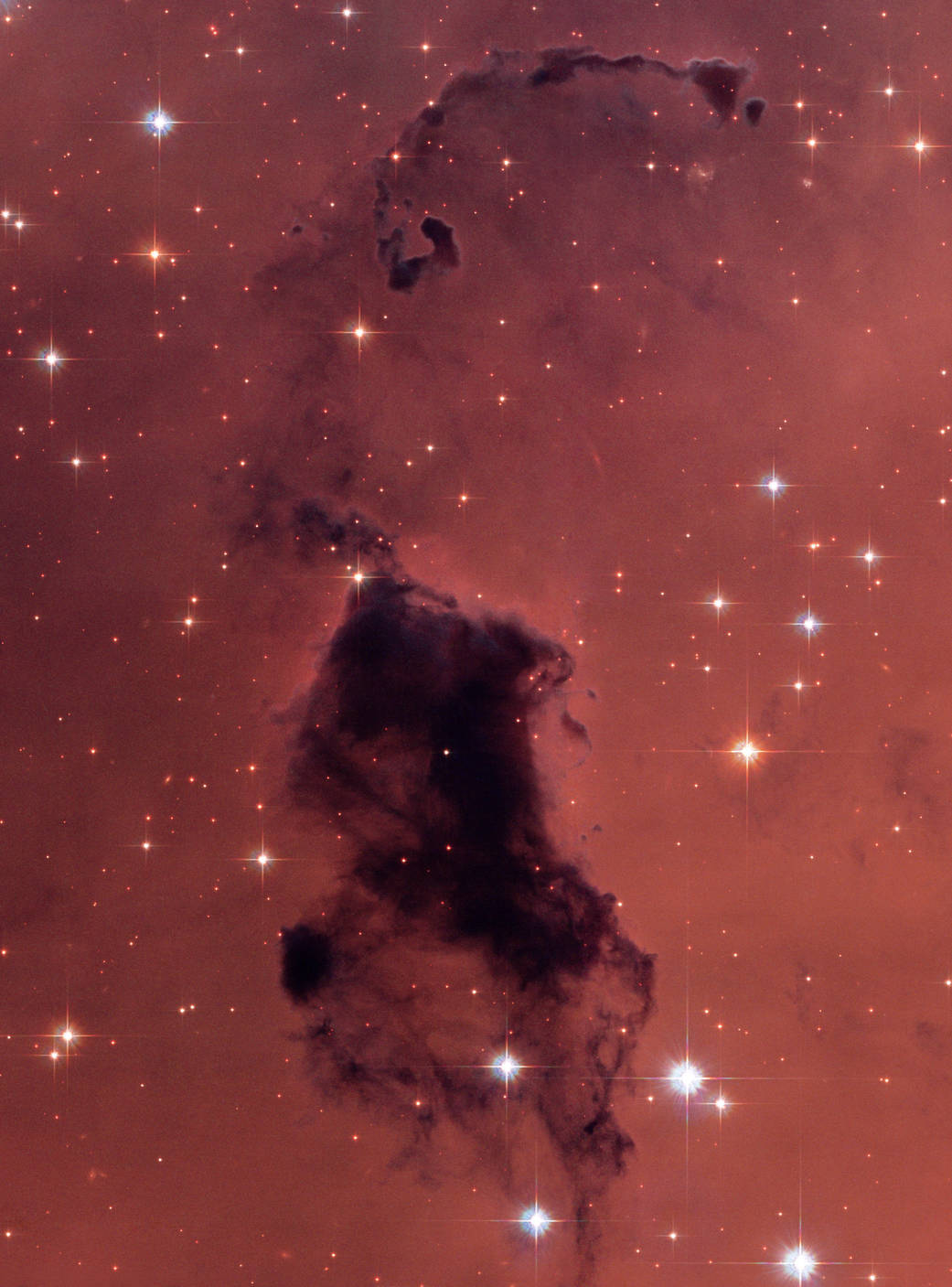The yearly ritual of spring cleaning clears a house of dust as well as dust “bunnies,” those pesky balls that frolic under beds and behind furniture. NASA’s Hubble Space Telescope has photographed similar dense knots of dust and gas in our Milky Way Galaxy, but this dust isn’t a nuisance. It’s a concentration of elements responsible for the formation of stars throughout the universe.
These opaque, dark knots of gas and dust are called “Bok globules,” named after astronomer Bart Bok, who proposed their existence in the 1940’s. They’re absorbing light in the center of the nearby star-forming region known as NGC 281, ocated nearly 9,500 light-years away in the direction of the constellation Cassiopeia.
Bok hypothesized that giant molecular clouds, on the order of hundreds of light-years in size, can become perturbed and form small pockets where the dust and gas are highly concentrated. These small pockets become gravitationally bound and accumulate dust and gas from the surrounding area. If they can capture enough mass, they have the potential of creating stars in their cores; however, not all Bok globules will form stars. Some will dissipate before they can collapse to form stars. That may be what’s happening to the globules seen here.Image Credit: NASA, ESA, and The Hubble Heritage Team (STScI/AURA)
2 min read























